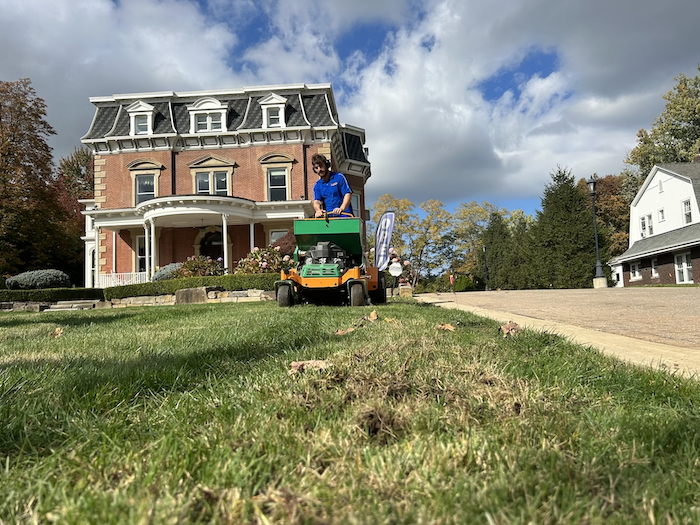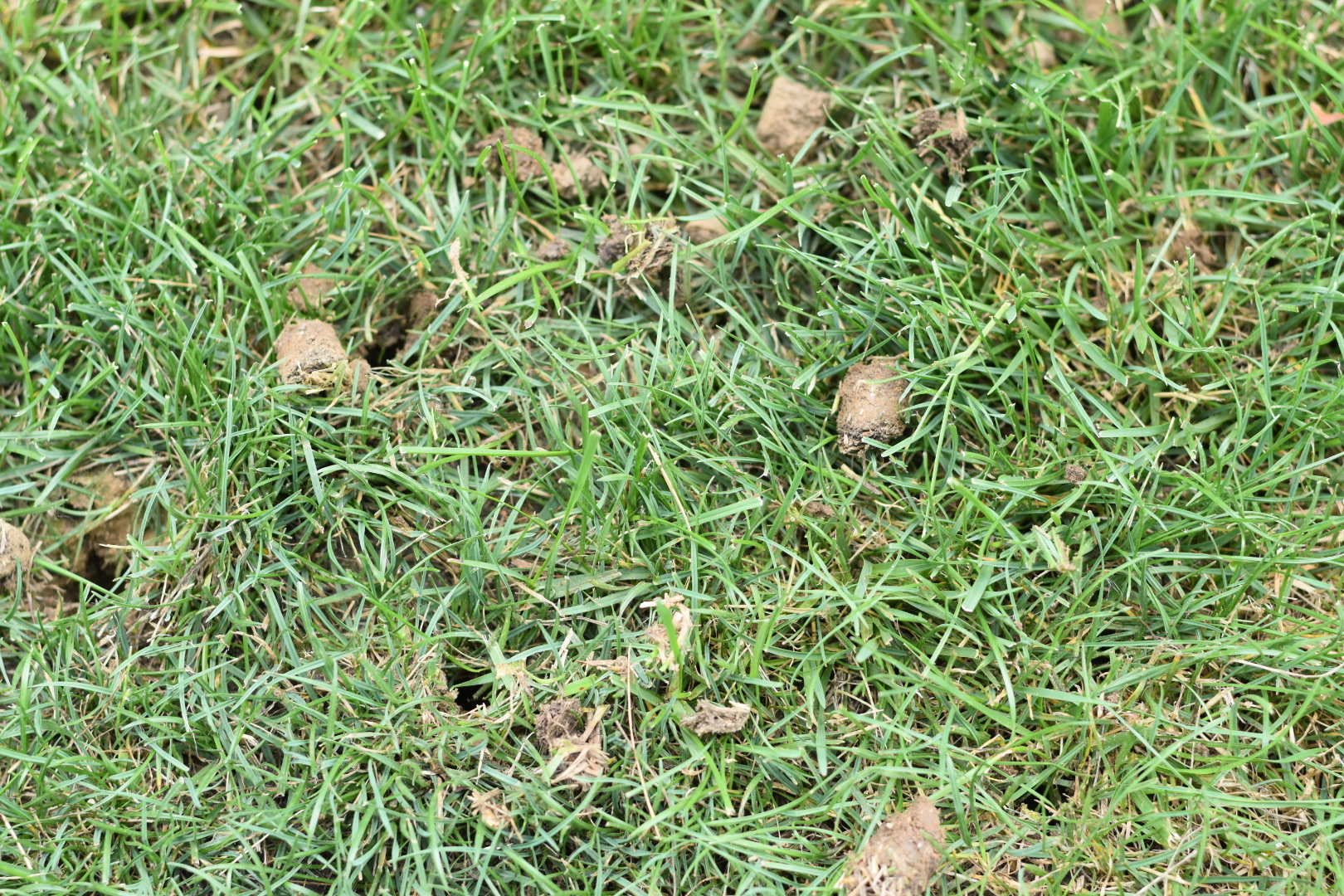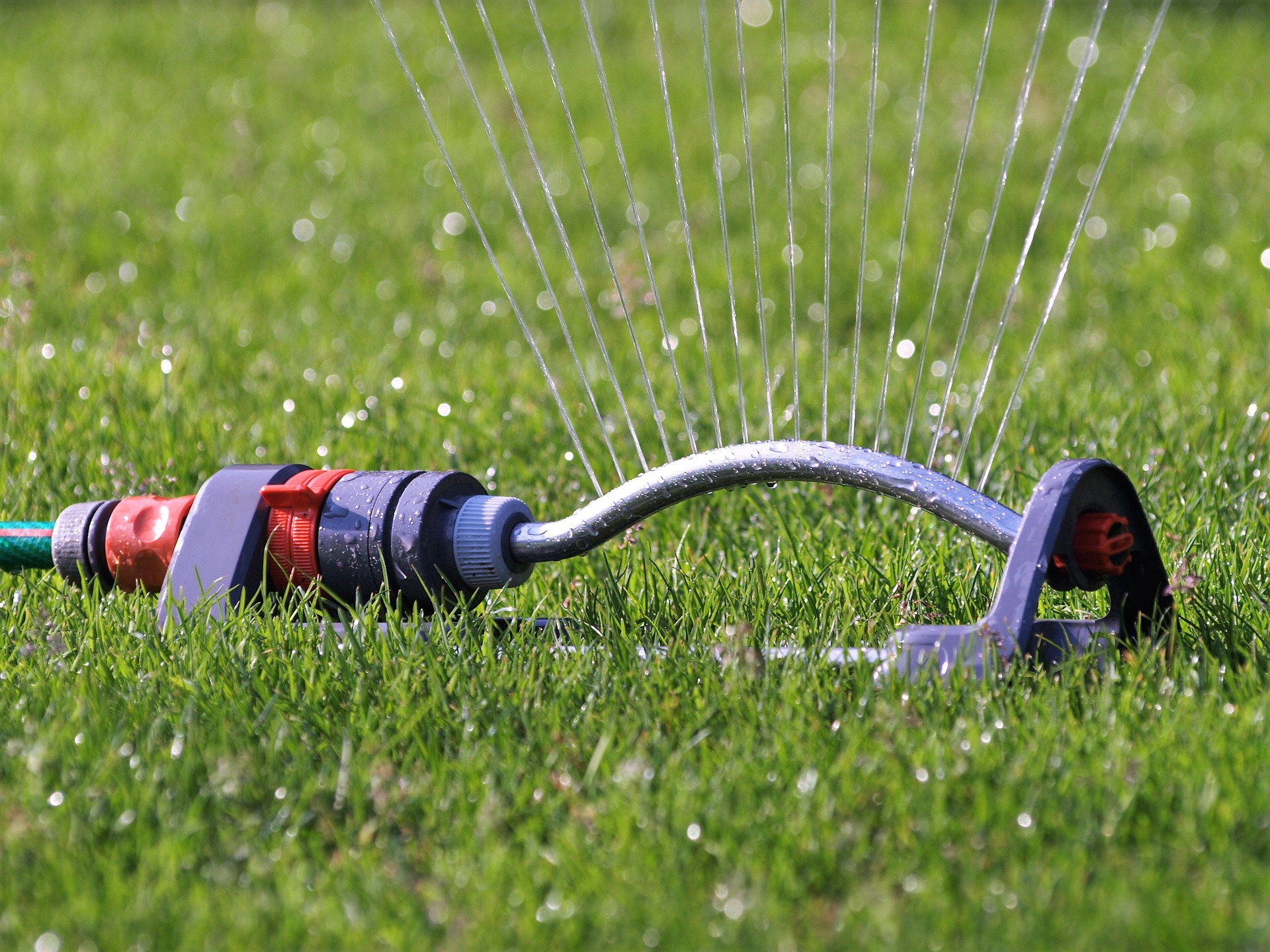/Crew%20looking%20closely%20at%20lawn%20with%20truck.jpg)
6 Common Lawn Issues In Summer Not Caused By Diseases Or Pests
Have you ever noticed dry patches on your lawn or your lawn turning brown in the summer? You’ve confirmed that there’s no evidence of pests and diseases, so what are you missing?
It could be that these issues are a result of common lawn mistakes in how you care for your lawn. After all, Northeast OH’s higher summertime temperatures and lower precipitation levels create a recipe for drought stress, which results in your lawn drying out.
You can rest easy, though—these brown patches don’t always equate to expensive problems, and there are several summer lawn care tips you can follow to prevent your lawn from drying out.
6 Summer Lawn Care Mistakes
Let’s take a look at these lawn care mistakes and how to correct them.
1. Improper Mowing Height and Direction
Cutting grass too short (shorter than 3 inches) will lead to turf stress, resulting in your grass not growing well and becoming unhealthy. This also opens up your yard for the possibility of weed infiltration—not something you want after already putting the steps in place to eliminate the weeds in your yard. Continually mowing your yard in the same pattern may also be contributing to lawn issues.
/lawn%20mowing%20height.jpg?width=1200&height=676&name=lawn%20mowing%20height.jpg)
Cure: Set your cutting height to more than 3 inches when mowing. Also, change the direction that you cut. If you always mow in the same direction, you’ll experience rutting from the tires, especially if the ground is wet. This will cause the grass to become uneven and bumpy in the long run. Cut at different angles every time or at least every other time. You're not going to get the defined stripes you see at a Major League Baseball Stadium, but it is better for the grass.
Pro Tip: It’s better to leave grass clippings in the yard, rather than bagging them—unless there is already a disease present in your yard. Recycling these grass clippings will allow the nutrients and water to go back into the soil.
2. Compacted Soil From Summer Foot Traffic
With people, pets, and wildlife roaming across your lawn nearly every day in the summer, it’s likely your yard experiences a lot of foot traffic. While it’s fun to be the “happening” house on the block, the downside is that all of this can lead to compacted and unhealthy soil.
Cure: Using a soil probe can help determine how compacted the soil is in your yard. If it’s very compacted, consider adding in core aeration and overseeding services. Aeration pulls plugs about 3 to 4 inches deep from your lawn, while overseeding involves spreading grass seed over the lawn. This can help thicken up bare spots by introducing new varieties of grass to the lawn. Our technicians perform these services at the same time, beginning in late summer/early fall.

3. Excessive Thatch Buildup
Thatch is the layer of plant material that builds up between the grass and the soil. If it becomes too thick—more than a half-inch—essential elements such as air, nutrients, and water cannot get down to the grass’ root system. Thatch can build up due to a variety of reasons, such as overfertilizing, overwatering, and not mowing enough.
Cure: You can tell pretty quickly if you have a lot of thatch buildup in your yard by using a soil probe. Core aerating and overseeding can help alleviate this problem.

4. Poor Irrigation Practices (Under or Overwatering)
Underwatering your lawn may seem like the most obvious answer for why your grass isn’t looking its best, but overwatering the grass may also be contributing to your problem.
For instance, underwatering will dry out the soil, weakening the grass and making it more prone to disease and damage. On the other hand, overwatering can actually suffocate your turf’s roots and eventually lead to rot, which promotes the right conditions for dry spots. Overwatering will also open up your lawn to the possibility of disease infiltration, as turfgrass diseases thrive on moisture. Remember that the time of day you water matters, too.

Cure: Using a rain gauge or can, measure how much your lawn is getting by placing the container in range of where the water reaches. We recommend watering your lawn up to 2 inches per week in half-inch increments each time. You can use a timer to determine how long it takes for the container to fill up to the half-inch mark and use that as your indicator for approximately how long it should take to water your lawn.
Pro Tip: The best time to water is between 6 a.m. and 10 a.m. so that water can more easily infiltrate the soil, and you won’t lose water due to evaporation in the heat of the afternoon. If you miss the morning window and need to water in the evening, do so by 5 p.m. Especially if there’s a lot of humidity in the air, wetting your lawn overnight can lead to disease issues.
5. Nutrient Deficiencies
Over time, a lawn may be missing some of the nutrients it needs to stay healthy. Lack of these nutrients can result in loss of color and thinning.
Cure: Fertilizing is one way to get nutrients into your grass. Our technicians perform six fertilization and weed control treatments from March to November. Because we use organic-based fertilizers, those last in the soil longer than synthetic ones, so your lawn will tend to stay greener longer with the help of our applications.
6. Pet Urine Damage
In springtime, you may notice the grass looks much darker and grows faster in the spots where your pet urinates. As temperatures go up and the growth of the turf slows down, they become more visible, and the dark spots will turn from tan to brown, with the edges still featuring a dark green color. This is because the urine’s high concentration of urea—a high-nitrogen source—causes burns to your grass.

Cure: If you have dry areas in your pet’s preferred “potty” spot, there are special dog treats that can help reduce the urine’s urea concentration. You can also soak the area with a hose to dilute the urine as much as possible. Try to also encourage your pets to go in different areas of the turf. In fall, it is best to seed these areas if you want to continue to have grass there. Otherwise, consider making a mulched or rock area for your pets to go so they don’t damage your grass anymore.
Say Goodbye to Summer Lawn Stress
We understand the stress and anxiety that can come with trying to keep up with the hotter, drier summers in Northeast Ohio, but there’s no need to throw away all the hard work you’ve put into trying to upkeep your yard and boost your home’s curb appeal.
Whether your yard lacks nutrients and could use a fertilizer treatment or is compacted and would benefit from aeration and overseeding, we can help. Even if you don’t know what the problem is–but just know that there is one–our knowledgeable technicians are here to help you figure it out.
/front%20of%20home%20green%20lawn%20with%20large%20tree.jpg?width=1200&height=676&name=front%20of%20home%20green%20lawn%20with%20large%20tree.jpg)
With many years of experience under their belts, our techs know all about the summertime lawn problems that can occur in Mentor, OH, and surrounding areas are ready to help bring the green back to your grass. Don’t wait to get your free quote today!


